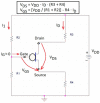From Enzymatic Dopamine Biosensors to OECT Biosensors of Dopamine
- PMID: 37622892
- PMCID: PMC10452593
- DOI: 10.3390/bios13080806
From Enzymatic Dopamine Biosensors to OECT Biosensors of Dopamine
Abstract
Neurotransmitters are an important category of substances used inside the nervous system, whose detection with biosensors has been seriously addressed in the last decades. Dopamine, a neurotransmitter from the catecholamine family, was recently discovered to have implications for cardiac arrest or muscle contractions. In addition to having many other neuro-psychiatric implications, dopamine can be detected in blood, urine, and sweat. This review highlights the importance of biosensors as influential tools for dopamine recognition. The first part of this article is related to an introduction to biosensors for neurotransmitters, with a focus on dopamine. The regular methods in their detection are expensive and require high expertise personnel. A major direction of evolution of these biosensors has expanded with the integration of active biological materials suitable for molecular recognition near electronic devices. Secondly, for dopamine in particular, the miniaturized biosensors offer excellent sensitivity and specificity and offer cheaper detection than conventional spectrometry, while their linear detection ranges from the last years fall exactly on the clinical intervals. Thirdly, the applications of novel nanomaterials and biomaterials to these biosensors are discussed. Older generations, metabolism-based or enzymatic biosensors, could not detect concentrations below the micro-molar range. But new generations of biosensors combine aptamer receptors and organic electrochemical transistors, OECTs, as transducers. They have pushed the detection limit to the pico-molar and even femto-molar ranges, which fully correspond to the usual ranges of clinical detection of human dopamine in body humors that cover 0.1 ÷ 10 nM. In addition, if ten years ago the use of natural dopamine receptors on cell membranes seemed impossible for biosensors, the actual technology allows co-integrate transistors and vesicles with natural receptors of dopamine, like G protein-coupled receptors. The technology is still complicated, but the uni-molecular detection selectivity is promising.
Keywords: FET; OECT; aptamers; biosensors; dopamine.
Conflict of interest statement
The author declares no conflict of interest. The funders had no role in the design of the study, in the writing of the manuscript, or in the decision to publish the results.
Figures





Similar articles
-
Organic electrochemical transistor arrays for real-time mapping of evoked neurotransmitter release in vivo.Elife. 2020 Feb 11;9:e50345. doi: 10.7554/eLife.50345. Elife. 2020. PMID: 32043970 Free PMC article.
-
Label-Free Split Aptamer Sensor for Femtomolar Detection of Dopamine by Means of Flexible Organic Electrochemical Transistors.Materials (Basel). 2020 Jun 5;13(11):2577. doi: 10.3390/ma13112577. Materials (Basel). 2020. PMID: 32516935 Free PMC article.
-
Functionalized Organic Thin Film Transistors for Biosensing.Acc Chem Res. 2019 Feb 19;52(2):277-287. doi: 10.1021/acs.accounts.8b00448. Epub 2019 Jan 8. Acc Chem Res. 2019. PMID: 30620566 Review.
-
Highly sensitive dopamine biosensors based on organic electrochemical transistors.Biosens Bioelectron. 2011 Jul 15;26(11):4559-63. doi: 10.1016/j.bios.2011.05.025. Epub 2011 May 19. Biosens Bioelectron. 2011. PMID: 21652201
-
Ion-Selective Organic Electrochemical Transistors: Recent Progress and Challenges.Small. 2022 May;18(19):e2107413. doi: 10.1002/smll.202107413. Epub 2022 Feb 18. Small. 2022. PMID: 35182018 Review.
Cited by
-
Recent Advances in the CRISPR/Cas-Based Nucleic Acid Biosensor for Food Analysis: A Review.Foods. 2024 Oct 10;13(20):3222. doi: 10.3390/foods13203222. Foods. 2024. PMID: 39456285 Free PMC article. Review.
-
Recent Advances in Photonic Crystal Fiber-Based SPR Biosensors: Design Strategies, Plasmonic Materials, and Applications.Micromachines (Basel). 2025 Jun 25;16(7):747. doi: 10.3390/mi16070747. Micromachines (Basel). 2025. PMID: 40731657 Free PMC article. Review.
-
Recent Progress in Organic Electrochemical Transistor-Structured Biosensors.Biosensors (Basel). 2024 Jul 4;14(7):330. doi: 10.3390/bios14070330. Biosensors (Basel). 2024. PMID: 39056606 Free PMC article. Review.
-
Cascade Amplifying Electrochemical Bioanalysis for Zearalenone Detection in Agricultural Products: Utilizing a Glucose-Fenton-HQ System on Bimetallic-ZIF@CNP Nanocomposites.Foods. 2024 Oct 8;13(19):3192. doi: 10.3390/foods13193192. Foods. 2024. PMID: 39410226 Free PMC article.
-
Development of Neurodegenerative Disease Diagnosis and Monitoring from Traditional to Digital Biomarkers.Biosensors (Basel). 2025 Feb 11;15(2):102. doi: 10.3390/bios15020102. Biosensors (Basel). 2025. PMID: 39997004 Free PMC article. Review.
References
-
- Popescu M., Ravariu C. Systemic Models at the Spinal Level for the Locomotion Control; Proceedings of the 10th IEEE E-Health and Bioengineering EHB-2022 Conference; Iași, Romania. 17 November 2022; pp. 1–4. - DOI
Publication types
MeSH terms
Substances
LinkOut - more resources
Full Text Sources

